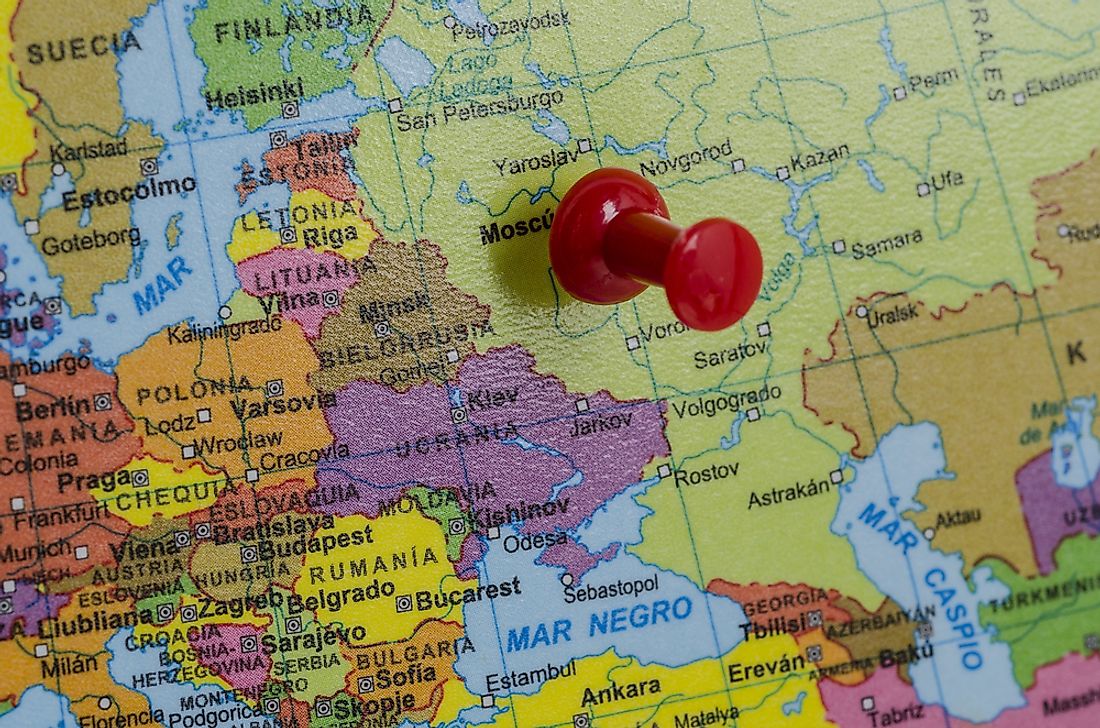Due to various political and geographical implications, the question is more complicated to answer than it would appear to be.

This seemingly easy and straightforward question is extremely controversial due to international political alignments which makes it difficult to get a uniform answer. Geographically, Eastern Europe consists of countries on the eastern side of Europe. Eastern Europe, as a term, has a socioeconomic and geopolitical angle and even scholars from the region seem not to agree on a single definition. To better understand and conclude this question, it is important to look at the different opinions about Eastern European countries.
Definitions of Eastern Europe
There are important definitions of this region, first of which is the cultural dimension which indicates that the countries of Eastern Europe have cultures influenced by Greek, Russian, Byzantine, Eastern Orthodox, and Ottoman cultures. Another definition looks at the Cold War era where the term “Eastern Bloc,” described communist countries in the region that were not part of the Soviet Union and buffered Western Europe from the USSR. Also known as the “Iron Curtain,” these countries stagnated in development. As a consequence of this history, some citizens of this region may not associate themselves with the term Eastern Europe. UN Statistics Division lists Bulgaria, Hungary, Czech Republic, Ukraine, Moldova, Belarus, Russian Federation, Slovakia, Romania, and Poland as countries in Eastern Europe. Other sources include Montenegro, Serbia, Albania, Croatia, and Bosnia in this list as well as the Baltic countries.
Some Examples Of Countries Considered As Part Of Eastern Europe
Latvia
The Republic of Latvia is a Baltic state bordering Estonia, Lithuania, Belarus, and Russia. It also shares a maritime border with Sweden. There are approximately 1,957,200 Latvians within the country’s 24,938 square miles’ territory. Historically, Latvia has been under different rules including Swedish, Polish, Livonian, German, and Russian as well as forced incorporation into the Soviet Union just before the onset of World War II. Latvia restored its independence in 1991 through a revolution and fully embraced democratic governance. Managing to maintain the Baltic language and identity despite centuries of foreign rule, this country also managed to hold on to its majority protestant belief while few others adopted the Catholic faith and Eastern Orthodoxy. Currently, Latvia is a member of regional bodies like the UN, NATO, EU, IMF, WTO, and the Council of Europe.Moldova
Moldova is a landlocked country that borders Romania and Ukraine. Between the fourteenth and the nineteenth centuries, Moldova was a vassal state to the Ottoman Empire after which the Russian Empire took over the territory. As part of the dissolution of the USSR, Moldova declared its independence in 1991. Moldova has the poorest economy in Europe and it is the least visited by tourists. This country practices a parliamentary democracy with a president as the head of state and the prime minister as the head of government. Moldova is a member of the UN, WTO, GUAM, and Council of Europe and it has also shown interests of joining the EU.Romania
Between 1947 and 1989, the Socialist Republic of Romania practiced Marxist-Leninist system led by a brutal party that tortured and executed many citizens. On November 11, 1989, students and activists protested in search of reforms and after a series of protests, a revolution against the government ensued. During the revolution, 1,104 people died and the number of those wounded stood at 3,352. The revolution facilitated the trial and prosecution of some government officials while at the same time introducing major economic and political reforms.Eastern Europe After The Fall Of The Soviet Union
After the sudden collapse of the Soviet Union, Eastern European countries rejoiced at their new social, economic, and political freedoms. The joy was, however, short-lived as internal political and economic disturbances soon cropped up. Most of these countries experienced violent political supremacy battles and border disputes. Eager to develop their systems, many citizens destroyed, replaced or discredited items of their Soviet past. With the new-found freedom, decades of ethnic animosities within the region also erupted leading to ethnic unrest and territorial disputes. Positive changes also happened during this time. One of the hallmark transformation of Eastern European countries was the opening of their doors to the west, and the rest of the world, as evidenced in the music, commerce, fashion trends, and electoral processes.Which Countries Are in Eastern Europe?
Countries that are generally considered to be a part of Eastern Europe are Romania, Ukraine, Russia, Lithuania, Latvia, Estonia, and Moldova.
What Countries Are in Eastern Europe?
| Rank | Countries |
|---|---|
| 1 | Russia |
| 2 | Lithuania |
| 3 | Latvia |
| 4 | Estonia |
| 5 | Romania |
| 6 | Ukraine |
| 7 | Moldvoa |
0 comments:
Post a Comment